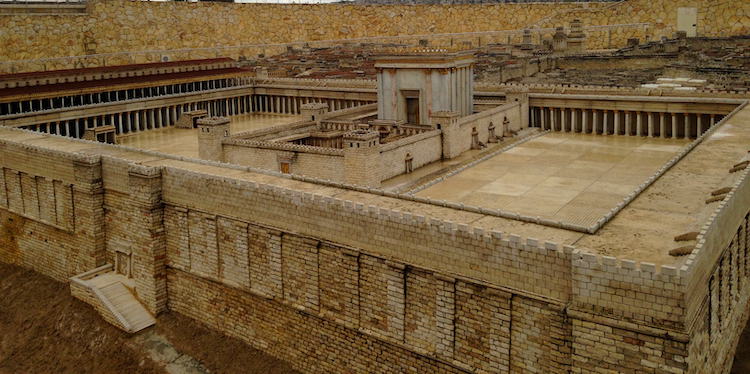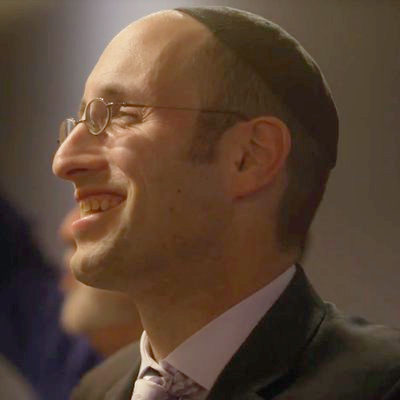The Palm Frond and the Sword
By comparing Roman swords and the palm frond, we can appreciate a remarkable aspect of Jewish life.

Striking archeological discoveries are a constant in Israel, but they can still occasionally inspire wonder. That is the case with the uncovering of a weapons cache from the second century, placed in the Judean desert by Jewish soldiers under the command of Simon bar Kosiba, better known as Bar Kochba, or “son of the star.” He led a rebellion against the Roman emperor Hadrian in the 130s C.E. The Jerusalem Post reports:
An ancient cache of Roman weaponry including four spatha swords and a javelin head was found in a hidden chamber inside a cave at Israel’s Ein Gedi Nature Reserve, in the Judean desert…. “To find one sword like this is rare, so four? It’s a dream come true,” the researchers noted. “We couldn’t believe our eyes.”
The weapons cache was most likely hidden by Jewish rebels some 1,900 years ago, the authority said, after being seized from Roman forces. One of the IAA staff said it was possible that they would detect DNA on the swords that would provide even more incredible details.
It is indeed incredible, but it must be said it is not at all the most incredible discovery from the Bar Kochba period; or, rather, that these Roman swords can be truly appreciated only when considered in tandem with a very different find made in Israel many decades ago.
Let us set the historical stage. The emperor Hadrian reigned around half a century after the Second Temple was destroyed. While Jerusalem had lain in ruins for decades, it was still known as a Jewish city. Hadrian sought to transform it into a Roman one, Aelia Capitolina, with a center of pagan worship where the Temple had once resplendently stood, from which Jews would be forever banned. This is why the Talmud reserves a hatred for Hadrian that it did not even express toward his predecessors Titus and Vespasian, under whom the Temple had been destroyed. The Temple was razed because the Jews had rebelled against Rome’s political authority. For Hadrian, this was not enough; the sacred city of the Jews had to be de-Judaized forever.
This sparked the most famous failed military endeavor in Jewish history. The rebellion was supported, according to the Talmud, by Rabbi Akiva, the greatest sage of his era, who vested messianic hope in Bar Kochba, fueled by a faith that God would not allow such a desecration of His city. We can well understand his religious logic; after all, a miraculous salvation had come under the Maccabees three centuries earlier, when Antiochus had sought to Hellenize Jerusalem. Yet salvation and victory did not come. Bar Kochba did not prove to be the messiah of Rabbi Akiva’s hopes, and the sage himself was executed, tortured to death, with the words of the Shema on his lips.
Eighteen centuries later, in 1961, excavators near Beersheba discovered a cavern containing, as the archaeologist Yigael Yadin described it, a “collection of baskets overflowing with human skulls, and layers of large mats covering human bones.” These were “the remains of Bar Kochba’s fighters,” Yadin conjectures, who had died “from famine or thirst, with Roman soldiers besieging them from above.”
But that was not all that Yadin found. The cavern contained letters from Bar Kochba himself, including one written in advance of the Sukkot holiday, referencing the ritual of waving a lulav, a palm frond:
Shimon to Yehudah, son of Menasheh, at Qiryat Arabayyah—I have delivered to you two donkeys [in order] that you dispatch along with them two men to Yehonathan, son of Ba’yan, and to Mesabalah [in order] that they pack up and deliver to the camp, to you, palm branches and citrons. And you are to send additional persons from your place and let them bring you myrtle branches and willows. And prepare them, and deliver them to the camp, because the population is large. Fare well!
In the midst of war against the mightiest empire on earth, Bar Kochba desperately sought for his army to observe the rituals of Sukkot. The date palm was a supreme agricultural symbol of Judea. That is why it is wielded on the biblical harvest holiday and why Vespasian had minted coins with the same tree and the triumphant words Judea Capta (“Judea has been captured”). The request for lulavim is made more poignant when we realize that in rabbinic thought, the ramrod palm branch represents the spine. Above all, it reminds us, as Rabbi Norman Lamm reflected, that “to be a Jew, to be possessed of this sublime historic faith…requires, above all else, the power, the moral strength, the ethical might, and the undaunted conviction that are symbolized by the unbending backbone, the lulav.”
Today, if one were to visit Jerusalem during Sukkot, one would see a city with Jews holding lulavim aloft, reciting the very same psalms that were once uttered by Rabbi Akiva and Bar Kochba’s men, seamlessly linking past and present. The lulav letter thus reflects the unique nature of Jewish life. The Israeli scholar and diplomat Yaakov Herzog once conjectured that were most peoples to meet figures from their ancient past, they would find that their faith and culture had so profoundly changed that they would have little in common with the individuals from antiquity; these ancients would be seen as “great historical figures, but not necessarily part of the daily experience of the people among whom they had lived.” Yet were Rabbi Akiva to return, “Jews would speak to him, question him about his attitude towards the Bar Kokhba war, and what he thought about the destruction of the Temple. They would talk to him about the nature of the Jewish people, its dialogue with the God of Israel, and with the nations of the world, the historical experience, continuity and the future—as though he had never been away.”
Yadin reports that in standing among the skeletons of the Jewish soldiers, and finding the letter of Bar Kochba, awe settled over his cohort:
As we searched amid the ruins of the Roman camp, it occurred to us that we, who were unearthing the remains of the warriors of the cave in the cliffside below, were operating from a camp which had been set up by members of the Israel Defense Forces near the site of the old Roman camp. Israel’s soldiers of today were helping to restore to life, as it were, their comrades-at-arms of eighteen hundred years ago. The symbolism of it all was something which not even the most hardened cynic could gainsay.
With us in the Roman camp ruins then was a Jewish visitor from abroad. As he stood on the precipice, observing the scene, he blurted the old Hebrew formula: “Am Yisrael hai!” (“The Jewish people lives!”) He expressed what all of us felt.
They were right to be in awe, as it is indeed awe-inspiring to hold a Roman sword once wielded by fighters for Judean freedom. But it’s even more inspiring to ponder the fact that these weapons, once wielded by Hadrianic legions thought to be all but invincible, now remind us of an empire long gone, even as the world still has plenty of ideological heirs of Hadrians, who despise the Jewishness of Jerusalem. Yet the ultimate vindication of Rabbi Akiva is to be found in the countless lulavim that will adorn Jerusalem this year, embodying a living, vibrant Judaism that holds aloft the spiritual symbol of the Jewish spine, and therefore of Jewish endurance. Thus does this new archeological discovery, several weeks before Sukkot, remind us of the wonder of our age: The lulav has outlasted the Roman sword.
This essay was originally published in Commentary.
By comparing Roman swords and the palm frond, we can appreciate a remarkable aspect of Jewish life.
By comparing Roman swords and the palm frond, we can appreciate a remarkable aspect of Jewish life.

